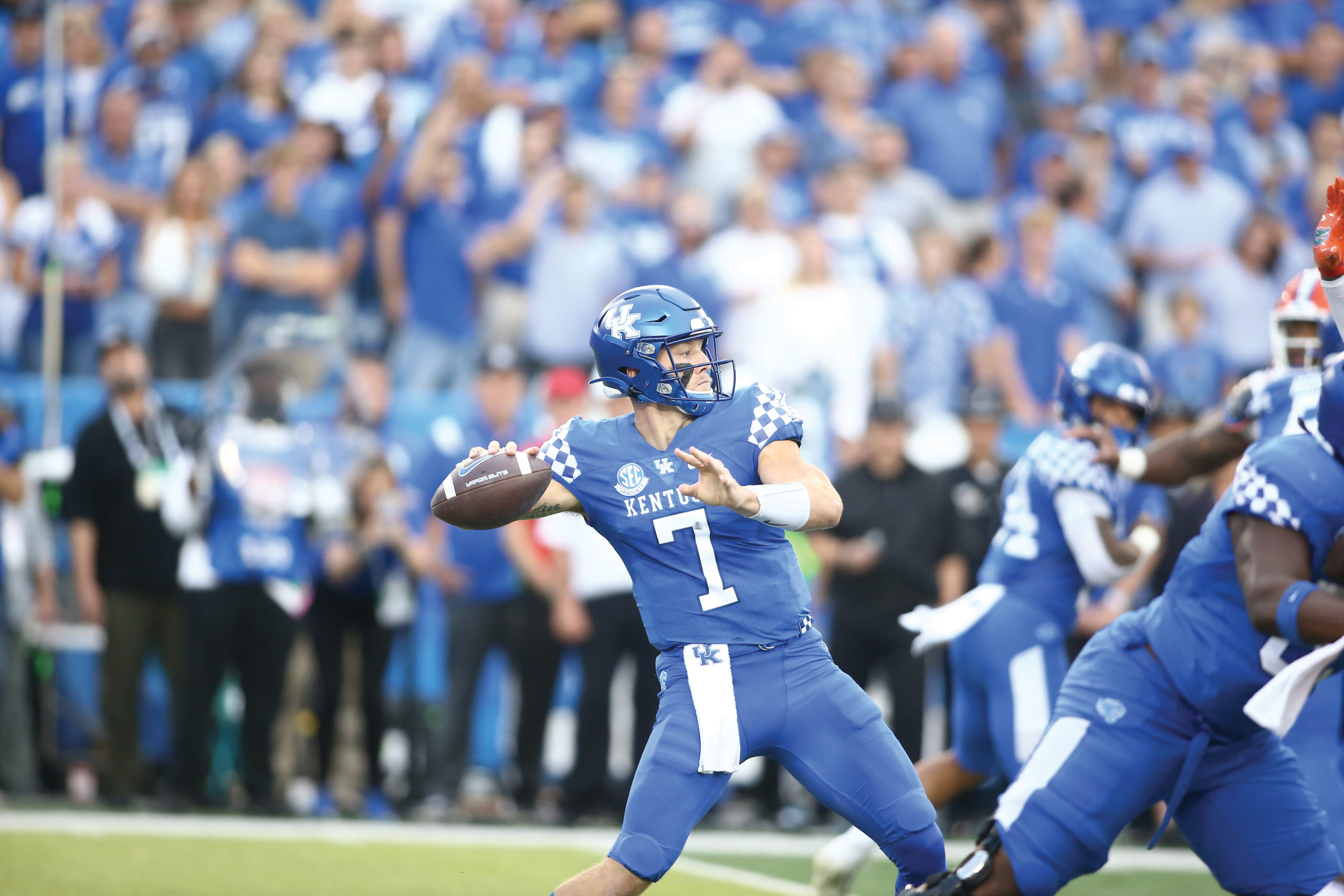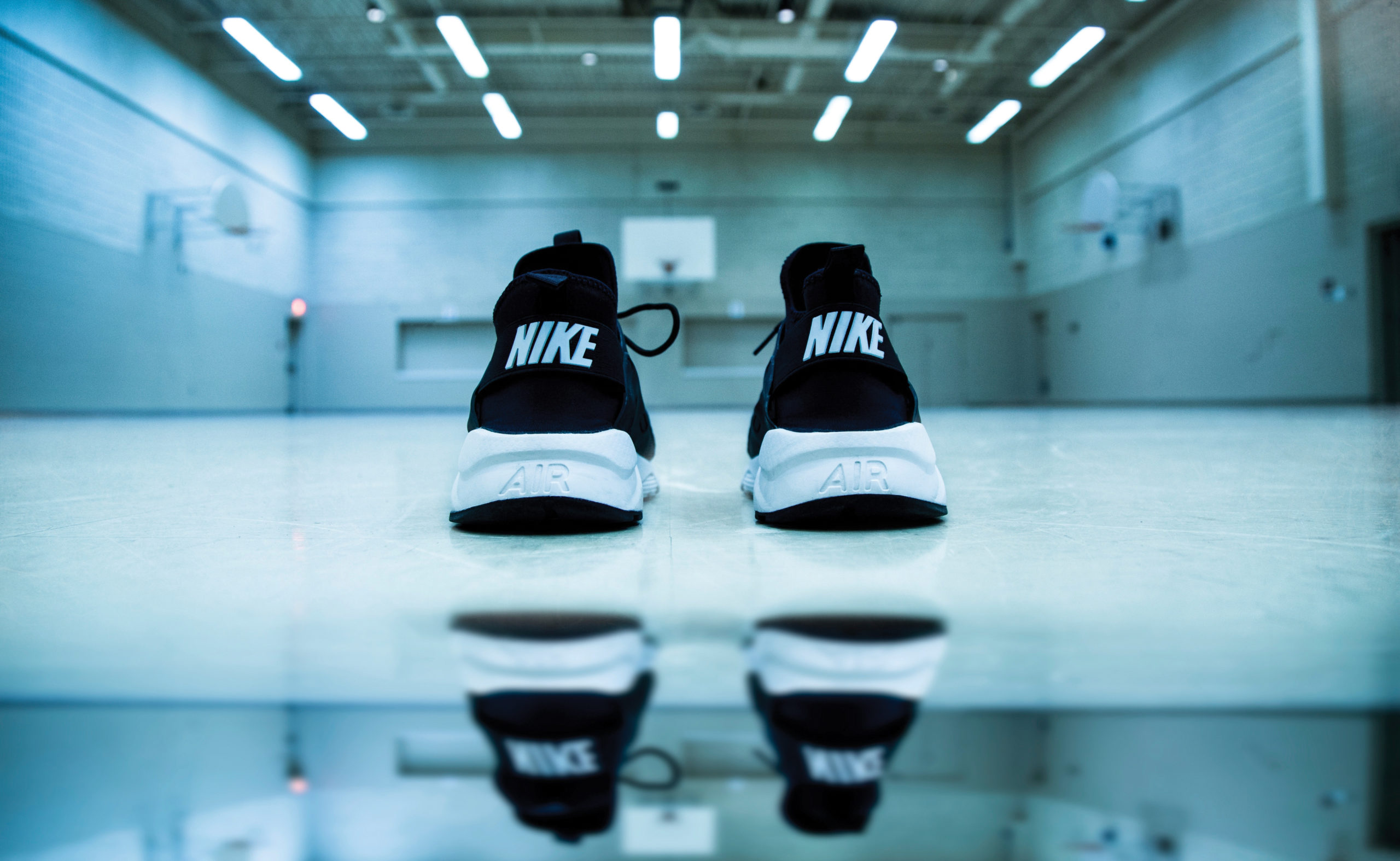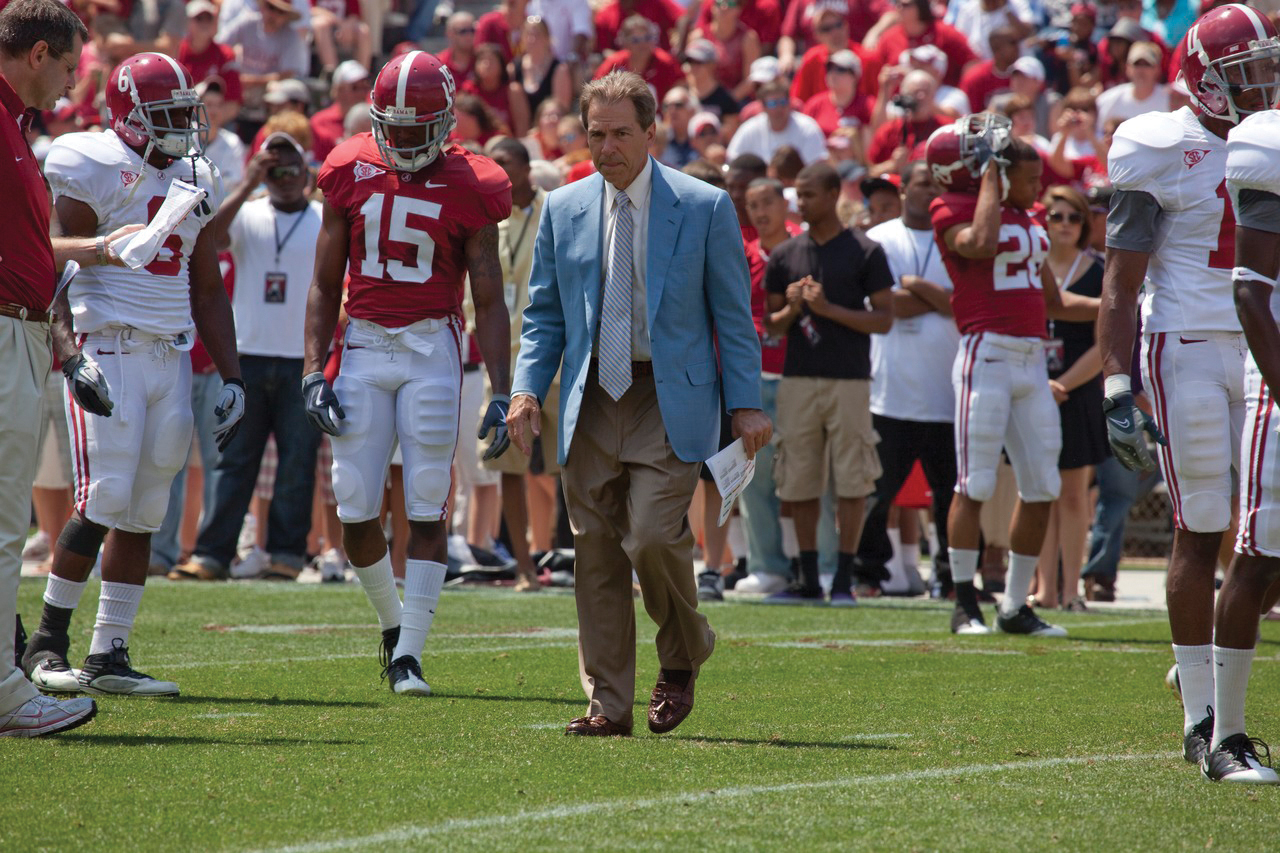
Kentucky beat Florida 20-13.
Photo by Eddie Justice | UK Athletics
Having just passed its one-year anniversary this summer, the NCAA’s name, image, likeness (NIL) rule already has created an estimated billion-dollar tsunami of change in college athletics. The impact of that change is expected to continue growing as both businesses and athletes come up with ways to take advantage of a new era of endorsements and compensation.
NIL went into effect on July 1, 2021, allowing college athletes to start monetizing their celebrity status and prestige.
It’s difficult to gauge how much money is involved because no rules or laws yet require schools and athletes to disclose earnings. However, Opendorse, which was one of the first to enter the NIL marketplace, recently released a report on its first year that presents a snapshot of how expansive NIL has become and paints a picture of future possibilities. Opendorse represents over 1,000 NCAA schools and more than 70,000 athletes, including the University of Kentucky, the University of Louisville and Western Kentucky University.
The company estimates that in year two, the total spend by businesses for college athletes in NIL deals with be $1.14 billion. It projects that athletes in the Southeast—defined as the states of Florida, Georgia, North Carolina and South Carolina—will earn a combined $234.5 million. Florida is listed at No. 1 and the other three are all in the Top 20. Kentucky is No. 17.
Opendorse offers no individual athlete or school compensation figures; the report is only categorized by region of the country. Kentucky’s region, the East South Central—which includes Alabama, Mississippi, Tennessee and West Virginia—ranked seventh among the nine regions at $96.6 million.
Incredibly, NIL riches have already filtered down to the high school level. Five-star guard DJ Wagner Jr., currently the subject of a recruiting war between UK and UofL, has signed a partnership with singer Drake’s Nike sub-label NOCTA. He has appeared in promotional material for the brand, which launched a new series of clothing in July. Wagner’s valuation is $89,000 and rising.
But that figure will probably pale in comparison to another high school phenom—Mikey Williams, the 6-2 California five-star prodigy who dunked at age 12 and whose exploits at San Ysidro (Calif.) High went viral when he scored 77 points as a freshman three years ago. Williams, a rising senior with 3.2 million Instagram subscribers, has since signed a contract with Excel Sports Management to pursue endorsement opportunities and now has a multiyear endorsement contract with Puma, making him the first American high school player to sign a sneaker deal with a global footwear company, as a 17-year-old.
“It’s gotten crazy out there,” Wagner said, an opinion shared by a number of college coaches, who have called it the wild, wild West.
“As big as we dreamed”
None of those developments—not the eye-popping numbers, the NIL’s fast start out of the gate or elite high school players inking deals—come as a surprise to most of the attorneys and accountants in the Lexington and Louisville areas contacted by The Lane Report.
“I believe NIL is as big as we could have ever dreamed,” said Jake Smith, an attorney with Wyatt Tarrant Combs and a former four-year starter on the offensive line and team captain at UofL (2011-14). “We just unleashed thousands of people with valuable commercial personas into the marketplace. Money and opportunities have followed the value.”
 Jack Wheat of the McBrayer firm, who has been practicing in intellectual property (IP) for nearly 50 years, including for UofL, said NIL is playing out much like he anticipated.
Jack Wheat of the McBrayer firm, who has been practicing in intellectual property (IP) for nearly 50 years, including for UofL, said NIL is playing out much like he anticipated.
“Many thought it would not be a big deal and would not result in big-buck deals,” Wheat said. “To the contrary, I expected that star athletes at the big schools with fanatic donor bases would reap big deals. Some star players at power schools are receiving not just $100 or $1,000 deals or even five- or six-figure deals. It is being reported that some are receiving deals in excess of a million dollars. I think reality has greatly exceeded the hype.”
7 figures for Tshiebwe and others
UK basketball All-American Oscar Tshiebwe was the first player in program history to win all six recognized national Player of the Year awards last season, making for a bright and lucrative future in the NBA. He made headlines by announcing he was skipping the NBA draft in June to stay in school for his junior season, in large part because he can make as much as $2 million by returning to UK.
“I can stay in school, get my degree, win a national championship and make money,” Tshiebwe said. “I see myself as a national champion because I was national player of year. Now is the time to go get that trophy to put in the school. We’re going to work.”
If anything, he may have underestimated his NIL earning power if UK’s trip to the Bahamas in August to play four exhibition games is an indication.
With a blitz of photo shoots, ad reads and merchandise signings during the trip, Tshiebwe stood to make about $500,000 in seven days, bringing his total NIL earnings to about $2.75 million, according to The Athletic. In licensed apparel sales alone, he is earning a reported $20,000 per month.
At least one of his other deals has a charitable element. Donato’s pizza franchise owners in Kentucky will give $1 to Tshiebwe’s Big O Foundation for every pizza ordered during the basketball season. The foundation will provide food, clothing, school supplies and educational initiatives in Tshiebwe’s home country, the Democratic Republic of the Congo, where he spent part of the summer.
Alabama coach Nick Saban revealed during SEC Media Days in July that his players made a combined $3 million in NIL deals over the last year, which he believes was “better than anybody in the country.”
“I’m all for the players doing as well as they can and using their name, image and likeness to create value for themselves,” added Saban, college football’s highest-paid coach at $10.7 million per year. “We have a great brand at Alabama, so our players’ value is going to be enhanced because of the value our brand can help them create.”
Maybe after learning about the ’Bama players’ largesse, UK football coach Mark Stoops went public with a plea for Wildcat fans to do more through NIL.
Stoops wasn’t shy in admitting that the Wildcats were behind when it comes to the NIL. So, he called Kentucky Sports Radio and used other media opportunities this summer to try to educate fans.
“Are we positioned where we need to be? No, no we are not,” Stoops told KSR’s Matt Jones. “We need people to step up. Boosters need to understand that it is legal for them to step up and pay (for NIL-related endorsements, marketing, etc.). We need a lot of people to get on the same page with this. This is the world we’re living in right now.”
Until the new rule went into effect after a 2021 U.S. Supreme Court decision, boosters for decades had been prohibited from providing any benefits to athletes under the penalty of NCAA sanctions for the school.

Incentive to perform well
UK announced recently that 176 student-athletes, including at least one from each school sport that competes in NCAA championships, got 1,329 NIL deals in year one. They include starting quarterback Will Levis, who signed a deal reported to be worth $100,000 with Grand Slam Collectibles of Murfreesboro, Tenn.
Dollar amounts for the deals weren’t announced officially. Grand Slam owner Nathan Burns, a UK fan, told YourSportsEdge.com his business has done $40 million in sports card revenue the past four years. Levis is guaranteed six figures and could score seven figures if his senior season leads fans to value his autograph more highly, Burns said.
Levis is one of the top NIL earners on campus. He ranks No. 29 in college football and No. 39 overall in the On3 NIL rankings, with a valuation of $583,000. He says UK has helped him through the process and noted the importance of that support.
“The fan base and the local market of people who are bought into the team and bought into us players—those are going to be where most of the opportunities come from,” Levis said in a video released by the university. “There’s definitely going to be opportunities for some guys on a national scale, but I think that the local markets are really the most important pieces of the puzzle for this because those are the people who are most passionately connected to the team and are willing to pour into us.”
UK track and field standout hurdler Masai Russell, who has the largest social media presence in UK Athletics with 683,00 followers (463,000 Tik Tok, 213,000 Instagram, 7,000 Twitter), describes herself on her website as “a social media influencer and vlogger, fashionista, dancer, businesswoman (who is) passionate about athletics, beauty, fashion/style, a great time, and female entrepreneurship.”
“Kentucky is the place to be just because it has a great support system, great people,” Russell said. “You have the support. People here want to help you, want to support you. They have programs for everything. They’re always setting something up so that you can succeed, on and off the track. … everyone is trying to work in your favor. You just have to take advantage of the opportunities given to you.”
“We are strong advocates for our student-athletes embracing NIL opportunities and have been assisting in every way we can,” UK Athletics Director Mitch Barnhart said. “Our student-athletes have taken NIL and run with it in innovative and exciting ways. I’m proud that so many of our young people have done the hard work to benefit in this new era. We’re also gratified that so many local and national businesses see our student-athletes as attractive ambassadors for their brands.”
To illustrate Barnhart’s remark about innovative approaches—even animals are getting into the act. UK basketball player Davion Mintz’s French bulldog Ghost was named the Official SpokesDog of Richmond Road Veterinary Clinic in Lexington earlier this year. Presumably, the checks will be written to Mintz, not Ghost.
Smart choices in “a sea change”
Matthew Banker, UofL’s associate athletics director/NIL sports administrator, said the school has over 400 NIL deals reported, but offered no specifics.
“What has been revealing and encouraging is the variety and depth of NIL deals our student-athletes are landing,” Banker said. “There are over 200 companies involved. Our student athletes are running their own camps and clinics and pursing other business ventures and learning marketing, branding and social media strategies (so they can) be effective.”

Despite the unpredictability of NIL, Banker said UofL was proactive prior to the new rule going into effect. They worked through potential NIL scenarios while preparing to support student-athletes through education and other resources so they could make informed decisions and maximize their NIL pursuits.
“The arrival of NIL was a sea-change for college sports,” he said. “It may be a stretch to claim any preconceived expectations for year one other than anticipating a layer of anxiety and a learning curve for all involved—student-athletes, coaches, businesses, university leadership, NCAA and beyond.”
UofL women’s basketball star Hailey Van Lith is listed among the most valuable athletes in U.S. college sports due to a social media following of nearly 800,000. She is among the first 15 female college athletes signed as a brand representative by Adidas shoes, and the only basketball player. The sophomore forward’s other deals include Dick’s Sporting Goods and JC Penney.
Van Lith is the face of a new Cardinal Adidas shoe she posted on her social media in mid-August. “New heat for #theville,” she captioned photos sporting the Ultraboost 1.0 UofL colorway sneakers.
Van Lith said she wants to involve teammates and other athletes and include a community service component such as a preschool shopping spree at Penney’s for children from Louisville’s Family Scholar House.
“For me an option like this where I get to involve the community, my teammates, other athletes, that’s really all I’m looking for in NIL,” she said. “Because at the end of the day, I’m going to be a pro no matter what and I’m going to have those marketing opportunities. But in college I have this really unique position to help better our community and our kids.”
“It’s about time” the work pays off
Because of his experience on both sides of NIL, as a former major college athlete and now an advocate for current athletes, Smith brings a unique perspective to NIL. And his opinion can be summed up this way: It’s about time.
“I did not know anything about the concept of NIL in college,” Smith said. “But generally speaking, I always believed it was unjust for the NCAA, postsecondary institutions, media outlets, conferences and other commercial entities to make millions off the product that is college sports while the athletes who make college sports valuable got nothing.
“We didn’t know what NIL was. All we knew is that we worked 14- to 16-hour days—attending workouts, class, film sessions, practice, film again and study hall—and were typically penniless. So, I was not comfortable with the fact that we were precluded from capitalizing on what could be our maximum earning years. Why should a vendor make money off a jersey that my teammate made valuable while my teammate got nothing? Unanimously, the sentiment in the locker room was that players should be paid for how hard they work.”
Now that times have changed and athletes can share in the pot of gold they help create, there is unanimous agreement among dealmakers and university overseers alike that UofL and UK are both fertile ground for NIL success.
“Absolutely,” said Jay Ingle of 200-year-old Jackson Kelly PLLC’s law office in Lexington. “Having grown up around UK athletics and having good friends now at UofL, I have seen first-hand just how rabid both fan bases are. When you have the ability to pair the celebrity of playing college sports in Kentucky with the deep love of our state and local communities, there are countless opportunities at varying levels. You have already had everything from ads for local dentists to marketing of multimillion-dollar Thoroughbred stallions to partnerships with the WWE (World Wrestling Entertainment).”
Another advantage both Lexington and Louisville have is that there is no competition for fan dollars from major professional sports such as the NBA, NFL and Major League Baseball.

As for the future, Michael Denbow of Stites and Harbison, which has law offices in both Lexington and Louisville, used a football analogy last fall to assess the NIL progress after only a few months, saying it then was on the 2-yard line with 98 yards to go. So where is that ball now?
“Maybe on the 5-yard line,” Denbow said. “There will continue to be ups and downs and the market needs time to mature. The initial newness of the concept is beginning to wane and now the market will start to act somewhat more rationally. There will be more talk of ROI (return on investment) and market value. Additionally, there will be some enforcement action taken over the next year that will further refine the market.”
Click here for more Kentucky business news.



















